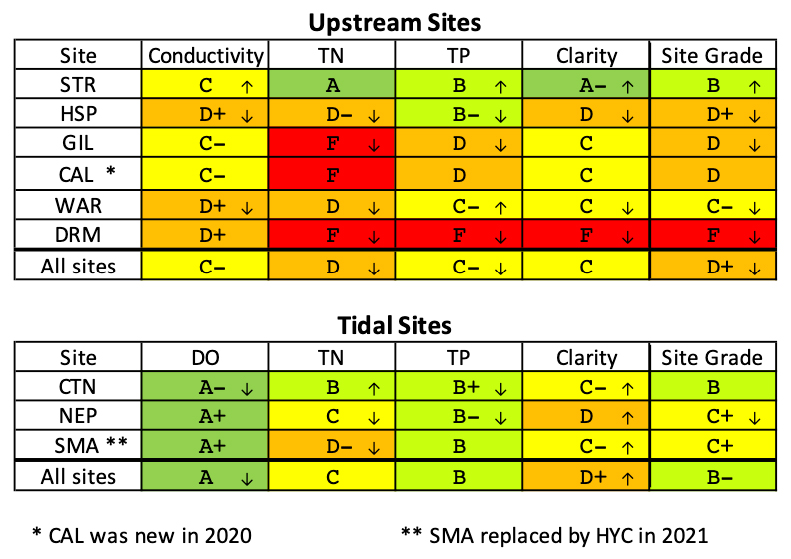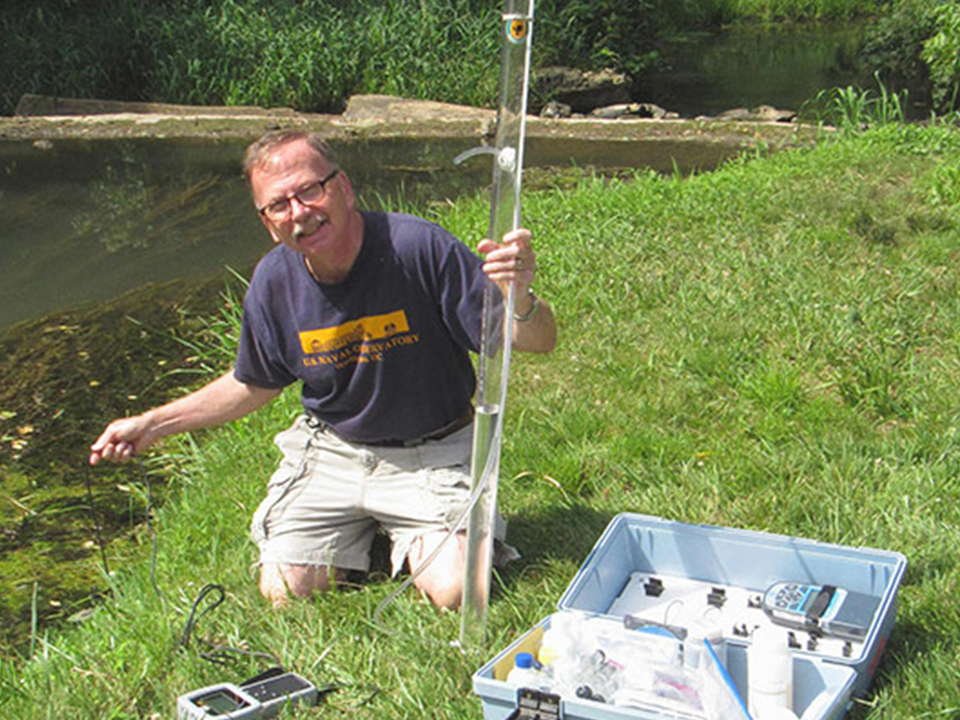How does ENERWA perform water quality sampling?
What do we measure and why is it important?
-
Air and water temperatures
-
pH
-
Total nitrogen (TN)
-
Conductivity
-
Total phosphorus (TP)
-
Dissolved oxygen (DO)
-
Water clarity (turbidity)
Nitrogen, phosphorus, and sediment are the three pollutants addressed by the Bay’s “pollution diet” overseen by the EPA. In our measurements, total nitrogen, total phosphorus, and water clarity are the parameters that directly relate to these pollutants. Conductivity is another measure of undesirable solids dissolved in water, and dissolved oxygen tells us how well a waterway can support living things — fish, invertebrates, etc.
What sites are now being monitored?

North East River Watershed

What about the Elk River?

How is the grade calculated?
View the raw ENERWA data at each site on the Chesapeake Monitoring Cooperative (CMC) Data Explorer, which is maintained by the Alliance for the Chesapeake Bay.
The tables on the left show the complete scorecard, according to the MTAC protocols, for our 2020 measurements in the North East River watershed. As can be seen, the tidal sites scored somewhat better than the upstream sites, which was also the case for 2019. Dissolved oxygen (DO) is not scored for the upstream sites (although it is used as a check) because DO is generally good in flowing streams. Conductivity is not scored for tidal sites because it is very sensitive to changes in salinity (salt content). In fact, we often see very high conductivity readings during the late summer or fall of the year, due entirely to small increases in upper Bay salinity from reduced rainfall then.
The differences in scoring from 2019 to 2020 are indicted by the small ↑ or ↓ marks in the lower right corner of each box, where ↑ means better in 2020 and ↓ means worse. No mark means the 2020 score is the same as for 2019. Although overall it appears that water quality got worse in 2020, we were not able to sample in April or May due to the governor’s COVID stay-at-home order, which may have affected the results. And, although the overall grade for the water-shed was C for both 2020 and 2019, numerically it is significantly lower for 2020.



